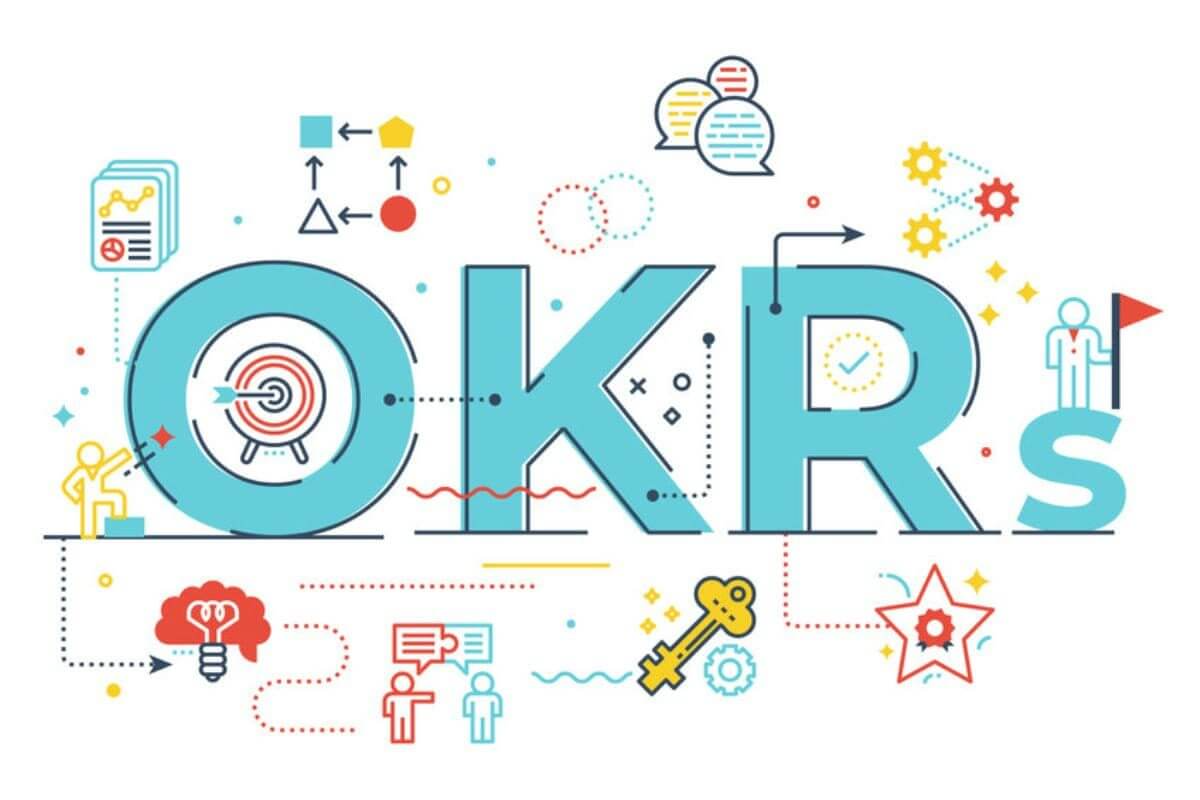OKR vs KPI: What's the Difference? Pros, Cons, and Expert Interview
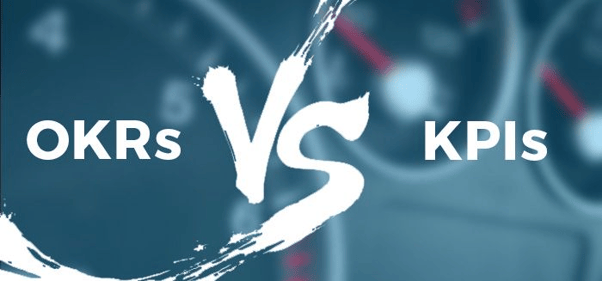 Source: Pinterest
Source: Pinterest
KPIs (Key Performance Indicators) are used by many companies to evaluate employees’ performance and are closely linked to compensation.
OKRs (Objectives and Key Results) are a management system used by many well-known companies such as Google and Microsoft and became popular in 2019.
What are the differences between OKR and KPI? Can OKR replace KPI?
In this article, we will
- compare the differences between OKR and KPI
- provide plenty of examples for OKR and KPI
- interview an expert from an multinational company for practical insights into using OKRs
Difference between OKR vs KPI
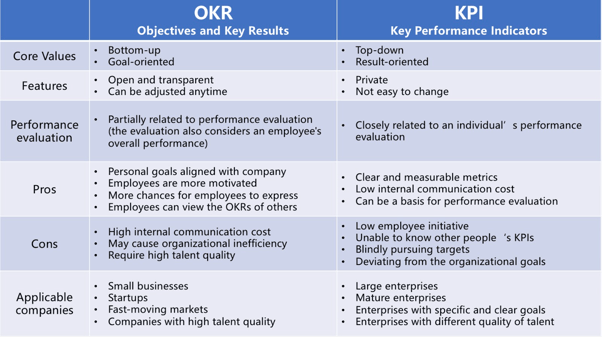
Core Value of OKR vs KPI
- OKRs are bottom-up goals set by employees and discussed with managers to ensure that they are aligned with business objectives.
- KPIs are top-down goals set by managers and assigned to team members, emphasizing the final results.
Features of OKR vs KPI
- OKRs promote transparency and flexibility by allowing employees to see each other's goals and adjust goals as needed.
- KPIs are private and not easy to adjust once set.
Performance Evaluation of OKR vs KPI
Although OKR is related to performance evaluation, it is NOT the only factor considered by managers.
If an employee only achieves 70% of their OKR goals, but the goals are challenging and the employee makes significant contributions, they may still get a high score in their performance evaluation.
KPI achievement is CLOSELY linked to one’s performance evaluation, compensation, and promotion.
Low KPI achievement often leads to poor performance evaluation, regardless of effort.
Pros of OKR vs KPI
- OKR
- ensure alignment between personal goals and company objectives
- empower employees to set their goals
- provide transparency for employees to view each other’s OKRs
- increase employees’ motivation to achieve their goals
- KPI
- clear and measurable indicators
- easy to communicate
- a basis for performance evaluation, eliminating personal biases
Cons of OKR and KPI
- OKR
- high internal communication cost
- managers need to continuously monitor employees
- departments may end up duplicating efforts
- require extra effort to coordinate
- KPI
- low employee initiative
- lack of motivation
- personal goals may deviate from company objectives
Applicable Companies of OKR vs KPI
- OKRs require higher talent quality.
Suitable for small and startup companies where everyone is motivated and knows what they need to do.
- KPIs provide clear goals from top to bottom, making management easier.
Suitable for large and mature companies with clear objectives, where managing a large number of employees with various skill levels can be challenging.
What is KPI?
KPI stands for “Key Performance Indicators.”
It helps measure a company's performance over time by quantifying goals through measurable indicators.
KPIs are established using the SMART criteria, ensuring that they are specific, measurable, achievable, relevant, and time-bound.
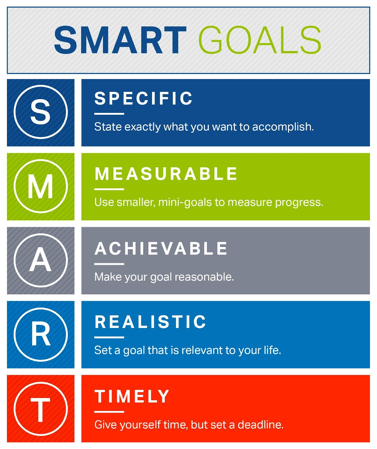 Source: Pinterest
Source: Pinterest
Examples of team KPIs:
- monthly new member sign-ups: 10,000
- quarterly revenue: $200,000
- return on investment (ROI): 200%
KPIs are used by management to evaluate employees’ performance and thus determine their compensation and promotions.
KPIs are also used to understand the company's current situation and predict the future performance.

Source: Pinterest
Ex. When a company wants to measure the effectiveness of an event, the KPIs may include:
- Total revenue reaches 3 million
- Event attendance rate reaches 50%
- Attendee satisfaction is 4 stars or higher
- The number of customer subscription increases by 200 within a week after the event
- Return on investment (ROI) reaches 25%
- 15,000 views on Facebook
- Shorten the registration process to 3-5 minutes
- 70% of customers and vendors participate in the event
- Improve the content quality of the event promotion post on Facebook
- Optimize the registration page
- Send event invitations to vendors and subscribers via email
What is OKR?
OKR stands for "Objective and Key Results."
Its goal is to guide employees in setting individual goals that are aligned with business objectives.
OKRs help employees understand WHAT they need to do and HOW to achieve the goals.
They also allow management to assess the company's performance and develop strategies for improvement.
To use OKRs, teams need to have a clear direction and set personal goals with measurable results that are aligned with business objectives.

Source: Pinterest
Ex. When a company wants to increase event participation, it can use OKRs as below.
- Objective : Increase event participation rate
- Key results:
- Execution plan:
OKRs help teams set objectives and key results that guide them toward achieving their objectives.
During the process, team members can also understand the reason behind the key results, such as " 15,000 views on Facebook", which is to "increase the event participation rate.
This ensures that everyone’s goals are aligned with business objectives.
Can OKR replace KPI?
OKR and KPI are essentially different and cannot be directly replaced by one another.
The emphasis of OKR is on how to do it, rather than what must be achieved, playing a guiding role in an organization.
KPI has the characteristics of the SMART principle, which sets challenging goals for team members to achieve within a certain time and improve employee efficiency.
The quantifiable indicators also provide a basis for performance evaluation, and is linked to one’s compensation and reward.
Therefore, KPI is still necessary.
KPI vs. OKR: Which is Better?
KPI and OKR have their pros and cons, and there is NO absolute good or bad.
The different characteristics of KPI and OKR make them suitable for different situations.

Source: Pinterest
KPI is a top-down approach where managers set goals for departments and individuals. Managers also use KPIs as standards for performance evaluation.
- Pros:
- specific and measurable
- easy to communicate
- can be used for performance evaluation
- Cons:
- top-down
- lack of flexibility
- employees may not reach a consensus
- employees may blindly try to reach goals
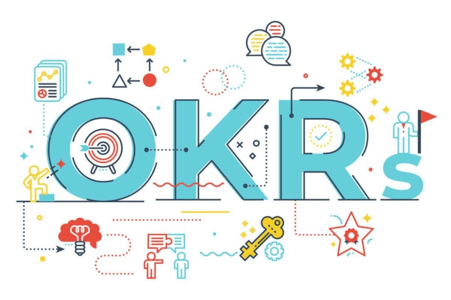
Source: Pinterest
OKR is a bottom-up approach that emphasizes “discussions” to understand what needs to be done to achieve the objectives.
Unlike KPI, OKR is not used as a reward or punishment mechanism but emphasizes consensus within the team.
During discussions, a shared objective can spark creativity among team members, leading to the generation of multiple key results.
- Pros:
- employees know what they are working for
- employees can actively think of ways to achieve their goals
- can increase team cohesion
- Cons:
- discussions may take time
- no clear basis for evaluating the performance
Can KPI and OKR Work Together?
OKRs and KPIs can work together to improve performance.
KPIs alone can create conflicts among departments or even go against business objectives.
For example,
The main objective of an enterprise is to "increase customer loyalty."
The marketing department's KPI is to ”increase website dwell time by 30%”.
To meet the KPI, the marketing department may design a complicated website and lengthen the registration process.
Ultimately, dwell time increases but customer satisfaction decreases.
Source: Pinterest
OKRs, being goal-oriented, can address these issues by setting up key results that are closely linked to business objectives.
By communicating with all employees, a company can ensure everyone is working towards the same direction.
KPIs can still be used to measure progress and results, and discussions around OKRs can lead to adjustments in KPI goal-setting.
Using both OKR and KPI in the decision-making process can be like this.
- Original KPI: Attain a rating of 4 stars or more in customer satisfaction.
- Communicating the objective of "improving brand image" with employees using OKRs.
- Including "improving satisfaction" as a key result in the OKRs.
- Adjusting KPI: Attain a rating of 4.5 stars or more in customer satisfaction.
Companies that use OKR
Many well-known companies such as Google, Amazon, Dell, Facebook, Microsoft, and LinkedIn have adopted OKR.
Generally speaking, OKR is suitable for various types of companies, but it requires high talent quality.
The following types of companies are particularly suitable for adopting OKR:
- Small businesses
- Start-up companies
Small businesses have a flat organizational structure.
Their communication cost is lower and they are more flexible in modifying OKRs.
Group discussion is an important part of OKR, and this is easy for start-ups.
Start-ups are also more flexible, which can stimulate the creativity of team members.
- Companies in industries with rapid changes
OKR can help companies achieve goals in a short period, and goals and key results can be adjusted under different circumstances.
Experts Interview: Experiences of Using OKRs
Is the concept of OKR as ideal as it seems?
We interview a senior executive from a well-known multinational company to share his experience of using OKRs in the company for many years.
Source: Pinterest
Q: Can you talk about how your company uses OKRs?
We set OKRs once a year, where employees set their own goals and discuss them with their supervisors.
We also review and adjust them every quarter or when needed.
Everyone's OKRs are transparent, and we can even see the CEO's OKRs. However, we hide some items or numbers for confidentiality purposes.
Q: Is OKR related to your performance evaluation?
We combine OKR with another personal evaluation system in our company. OKR is partially related to performance evaluation, but not entirely.
For example, all green lights in OKR do not necessarily mean excellent performance, as it may indicate that the goals are not challenging enough.
Therefore, the supervisor will still comprehensively evaluate the employee's performance throughout the process.

Source: Pinterest
Q: Is OKR helpful for supervisors to manage their staff?
OKR is beneficial for supervisors as it provides opportunities for high-performing employees to perform.
Employees can discuss their goals with their managers, and even negotiate with them, giving employees a lot of chances to show their talent.
However, the downside is that the communication cost is high, requiring a lot of time for managers to communicate with each employee regarding their objectives and approaches.
If an employee goes off track, the manager needs to find a way to bring them back on track, which can be time-consuming.
Q: What are the pros and cons of OKRs for employees, in your opinion?
I think the benefit of OKRs for employees is that they have more autonomy, and they can see what others are working on and adjust their OKRs accordingly.
However, OKRs also bring many challenges to their work.
For example, without clear top-down instructions, different teams may end up working on the same project, which makes it harder to coordinate.
Also, as some people have limited job scope, they may make their OKRs overly complex just to look “fancy”.
Q: What is the overall opinion of your company's employees on OKRs?
To be honest, our initial reaction to OKRs is "Come on, not again!"
It can be a bit bothersome, and we just want to get it over with.
I don't think OKRs are as perfect as they sound in theory. In practice, we encounter many difficulties.
For example, how do you expect a less capable employee to set their OKRs? They might not be able to set any at all.
So, talent quality plays an important role in the success of OKRs. If an employee is already intelligent and self-motivated, I believe they can perform well with or without OKRs.
Q: What do you think is the biggest difference between OKRs and KPIs?
There's no need to compare OKRs and KPIs because they are simply different in terms of their core value: one is top-down and the other is bottom-up.
However, in practice, the distinction between the two is often unclear, and it's not a matter of one being superior to the other.
 Source: Pinterest
Source: Pinterest
Q: What do you think is the biggest challenge for companies in implementing OKRs?
I think the biggest challenge in using OKRs in a company is its culture.
In my opinion, OKRs are NOT very suitable for eastern cultures.
OKRs require strong individual capabilities to prioritize tasks, while eastern cultures are more accustomed to a top-down approach where employees are told what to do.
When you ask employees to set their own goals, many of them lack direction. Therefore, the key is still the talent quality.
If you use OKRs but the talent quality cannot keep up, it will not work.
Source: Pinterest
I once met a startup CEO in Asia who shared his experience of using OKRs with me.
He told me that his company could not use OKRs effectively no matter how hard they tried.
Later, he changed direction and used OKRs only as a facilitator to communicate with his employees. This helped him ensure the alignment between personal goals and business objectives.
Interested in our solution?
You may want to have a chat with our event consultant.
